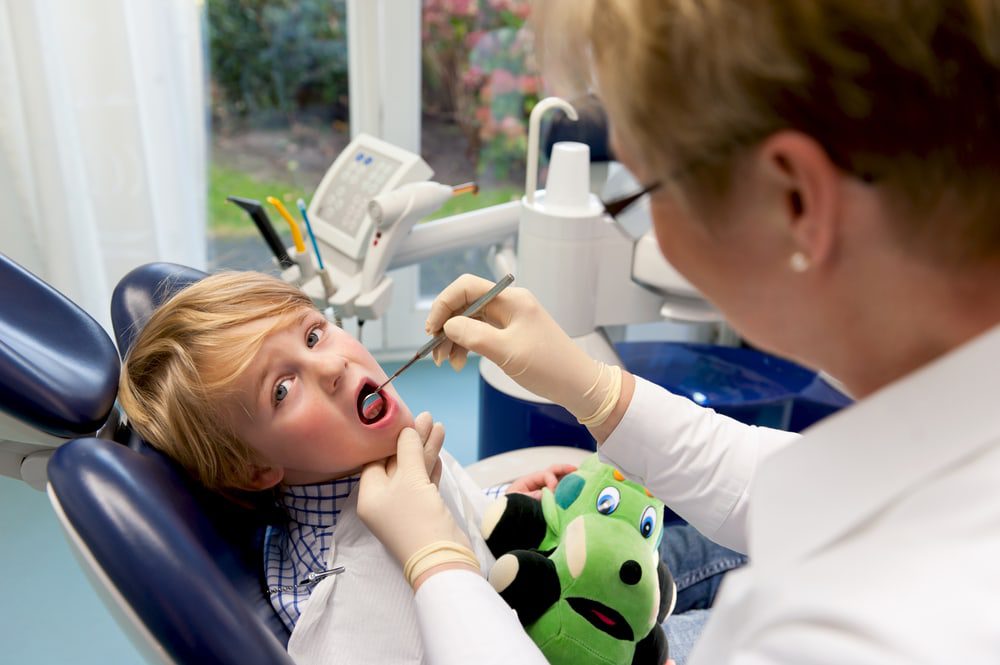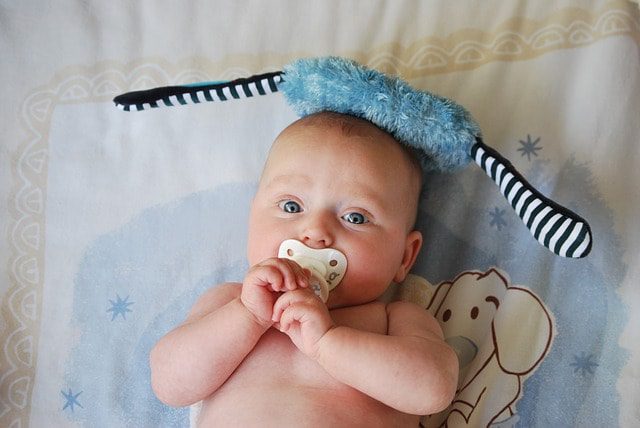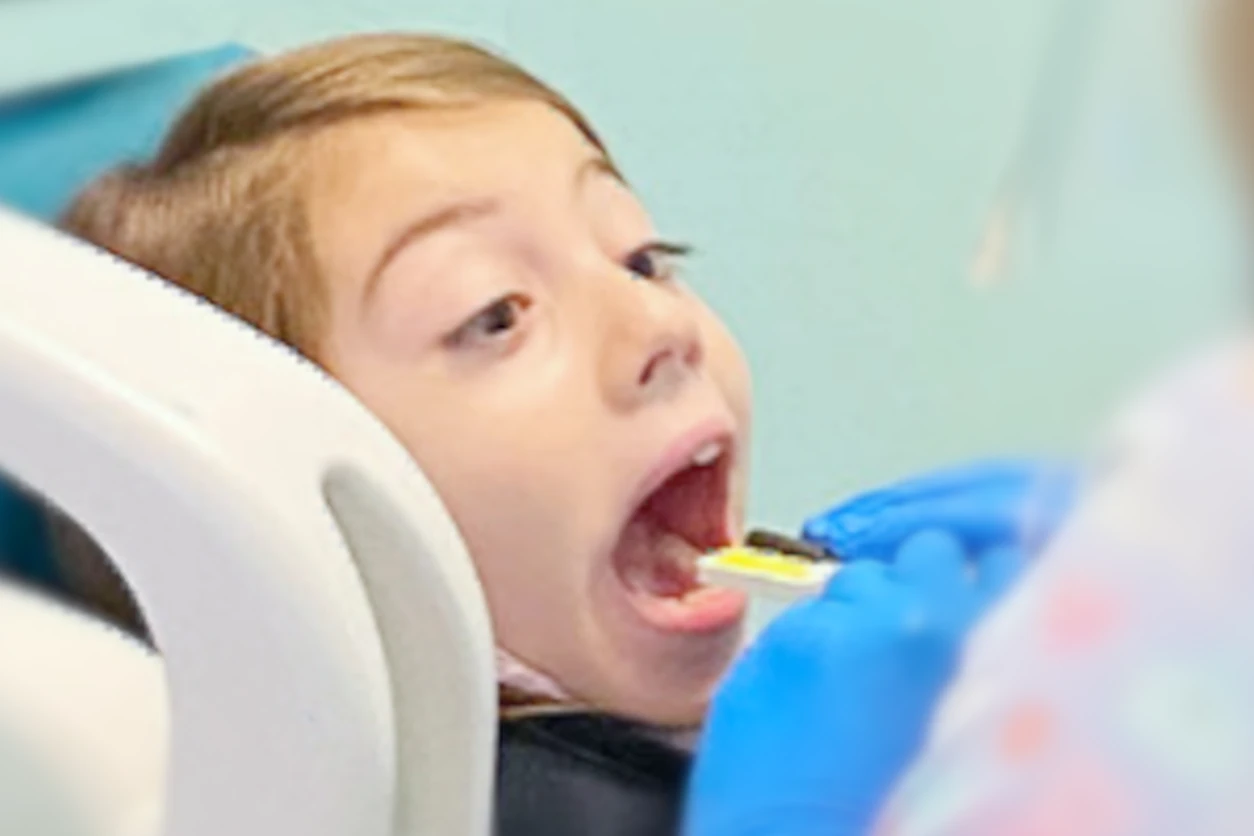When your child has crooked or misaligned teeth, braces are a simple and effective way to straighten them. Today, there are several options to choose from to ensure your child has a comfortable and easy experience with their braces.
To fully understand what braces are, here are the top eight choices:
- Traditional metal braces
- Partial braces
- Mini braces
- Self-ligating braces
- Ceramic braces
- Invisalign
- Lingual braces
- Removable braces
1. Traditional Metal Braces
The most familiar kind of children’s braces, traditional braces consist of metal brackets glued to the teeth, archwires, and colorful elastics. The elastics need to be replaced every four to six weeks to maintain a consistent pressure for guiding the teeth into place.
Though they are stronger than other types of braces, they require certain dietary restrictions to be upheld.
Children can’t eat anything that might pull metal braces off of teeth or even break the wires or brackets. These food restrictions are the same for any braces with the same basic structure, like partial, mini, self-ligating, lingual, or ceramic braces.
Out of all the types of braces for kids, traditional metal ones are the most common, making them the go-to choice for most parents.
2. Partial Braces
These types of braces for kids teeth function the same way a traditional metal set would, with metal brackets, wires, and elastics. The difference is they target specific teeth with fewer braces.
Partial braces will only use a few brackets on problem teeth, leaving the rest of your child’s mouth free of braces. These braces are ideal for straightening a few teeth at a time, especially if the majority of teeth aren’t causing an issue.
Although some parents might prefer their children to have partial braces, not all tooth problems can be dealt with by using them. Some children will have no choice but to get full braces depending on the state of their teeth.
3. Mini Braces
Unlike partial braces, mini braces provide a full set of braces. However, mini braces use less metal for each tooth bracket, making them less obvious.
Less metal for each tooth means there’s less in your child’s mouth, making mini braces more comfortable than the traditional full-metal hardware.
Despite their smaller size, the same systems and rules apply to mini braces as traditional ones. A child will still need to update their elastics and follow the proper food restrictions that traditional braces require.
4. Self-Ligating Braces
Self-ligating braces use metal clips to hold the archwire into place instead of elastics. Without elastics, self-ligating braces don’t need as many regular checkups and take less time to do their job. This makes them effective braces for kids because it straightens their teeth faster with fewer trips to the orthodontist.
What’s wrong with elastics? The tension from traditional braces is often absorbed by the elastics, making straightening teeth a lot slower. With the self-ligating metal clips, there is less absorption, meaning the tension is focused on the teeth as it’s meant to.
5. Ceramic Braces
These braces use ceramic brackets to hold the archwires instead of metal ones. The point of ceramic braces is to lessen the look of the braces, similar to mini braces. Ceramic has a more similar appearance to teeth than metal does, so by looking at a person with ceramic braces, it’ll be less obvious that they have braces at all.
However, because the ceramic isn’t as strong as metal, the brackets are larger than traditional braces and therefore less comfortable. They are also more susceptible to possible damage and can break if subjected to rough sports.
6. Invisalign
As the name suggests, Invisalign aligns your child’s teeth with nearly invisible measures. Invisalign is one of the few types of braces for kids teeth that don’t use a modified version of the traditional method. Instead, it uses see-through plastic aligners.
Every two weeks, your child gets an updated set of aligners to wear. The aligners fit over your child’s teeth to mold the bite into a straighter position, with each new set of aligners becoming gradually straighter.
Invisalign has no dietary restrictions because kids can easily take it out to eat and brush their teeth. When worn, it’s very difficult to tell they’re there and are not intrusive to your child’s mouth. However, because they require diligent use by your child, they are more effective for mature teens.
7. Lingual Braces
Lingual braces use the same method as traditional braces, but they go on the inside of the teeth instead of the outside. The inside approach is just as effective, but it can be more uncomfortable for a child’s tongue.
These braces are ideal for kids who want zero evidence of their tooth alignment treatment.
8. Removable Braces
These braces are generally used for a particular problem instead of generally straightening a smile. Issues like moving a single tooth, a group of teeth, or widening a child’s top jaw. These braces use springs and clips to fasten to the teeth and are usually less visible than other methods.
Which Is the Best Type of Braces for Kids?
Though there are many types of braces for kids’ teeth, the correct ones for your child depend on their specific issues and your budget. Any pediatric orthodontist in Los Angeles can help you make this decision.
Traditional braces are the most cost-effective and work well. However, if your child is shy about changing their appearance, mini, ceramic, or lingual braces might be a better choice. Similarly, Invisalign is a great method for teens who don’t want to advertise their braces.
Partial braces or removable braces work well for children with only a few teeth needing straightening. Self-ligating braces are a little more expensive, but straighten teeth faster with fewer appointments.
Conclusion
Choosing the correct type of braces for your child should include how willing your child is to change their appearance, and how comfortable the braces feel.
Talking through the options with your orthodontist can give you the confidence to choose the best braces for your child’s teeth.



